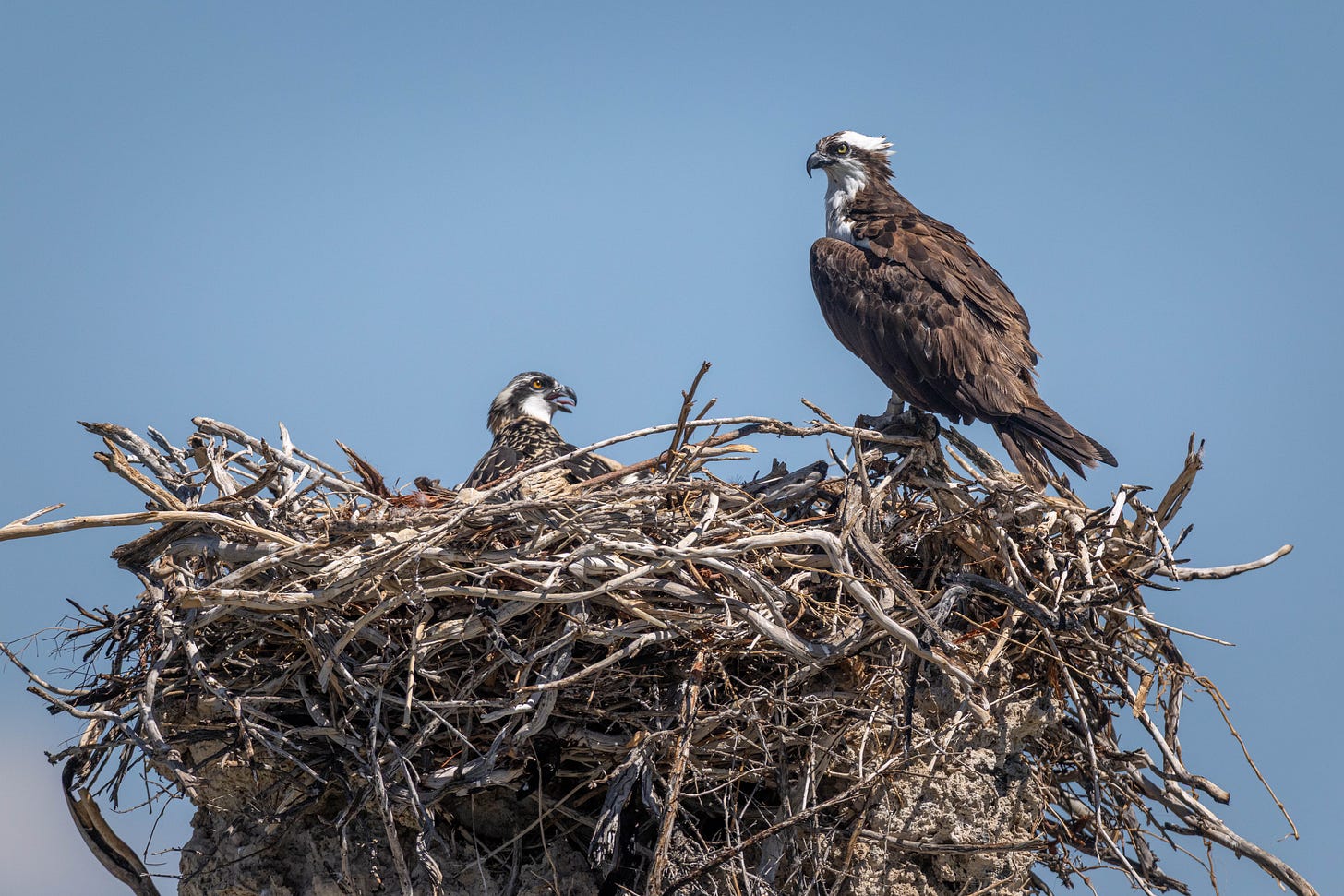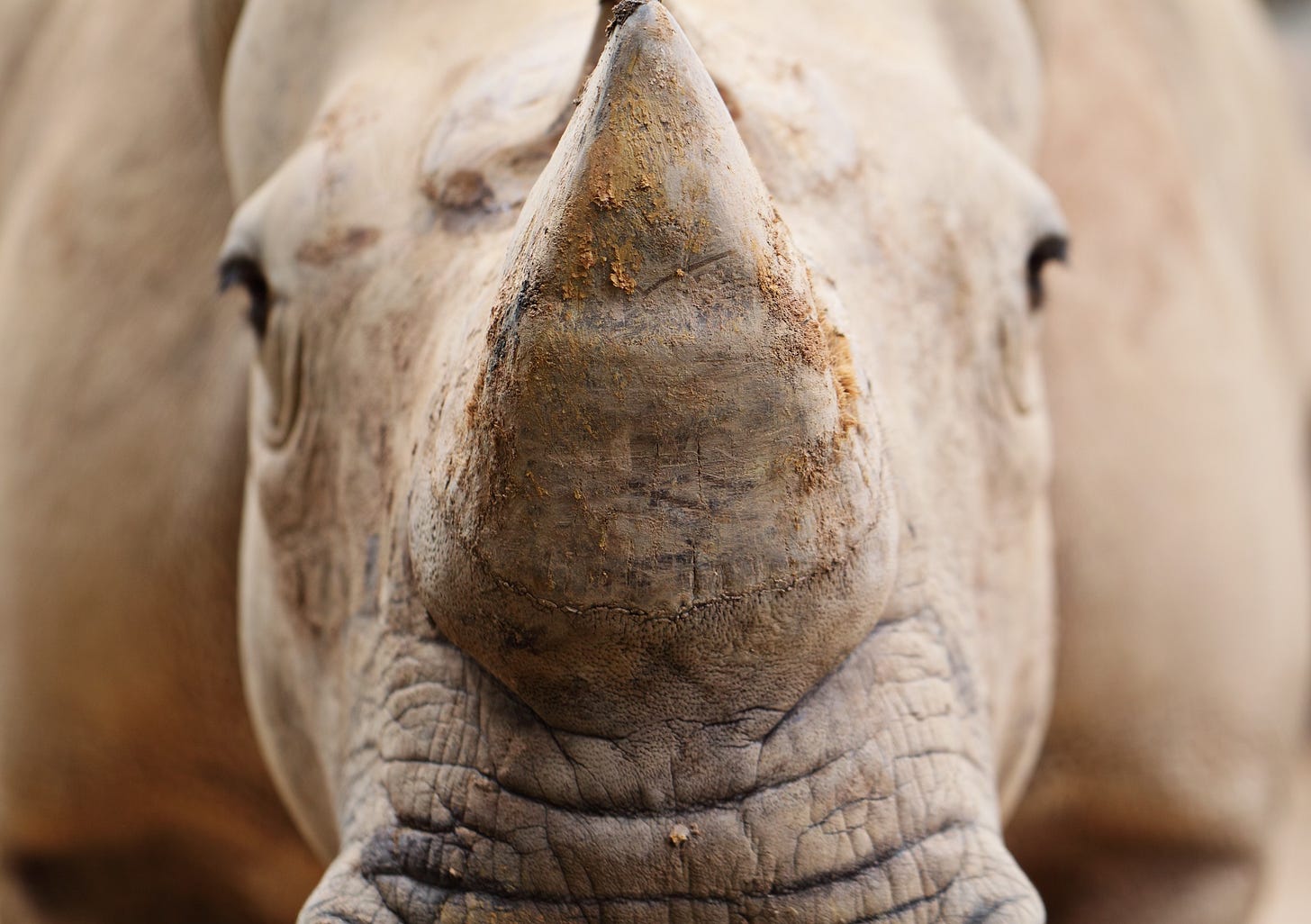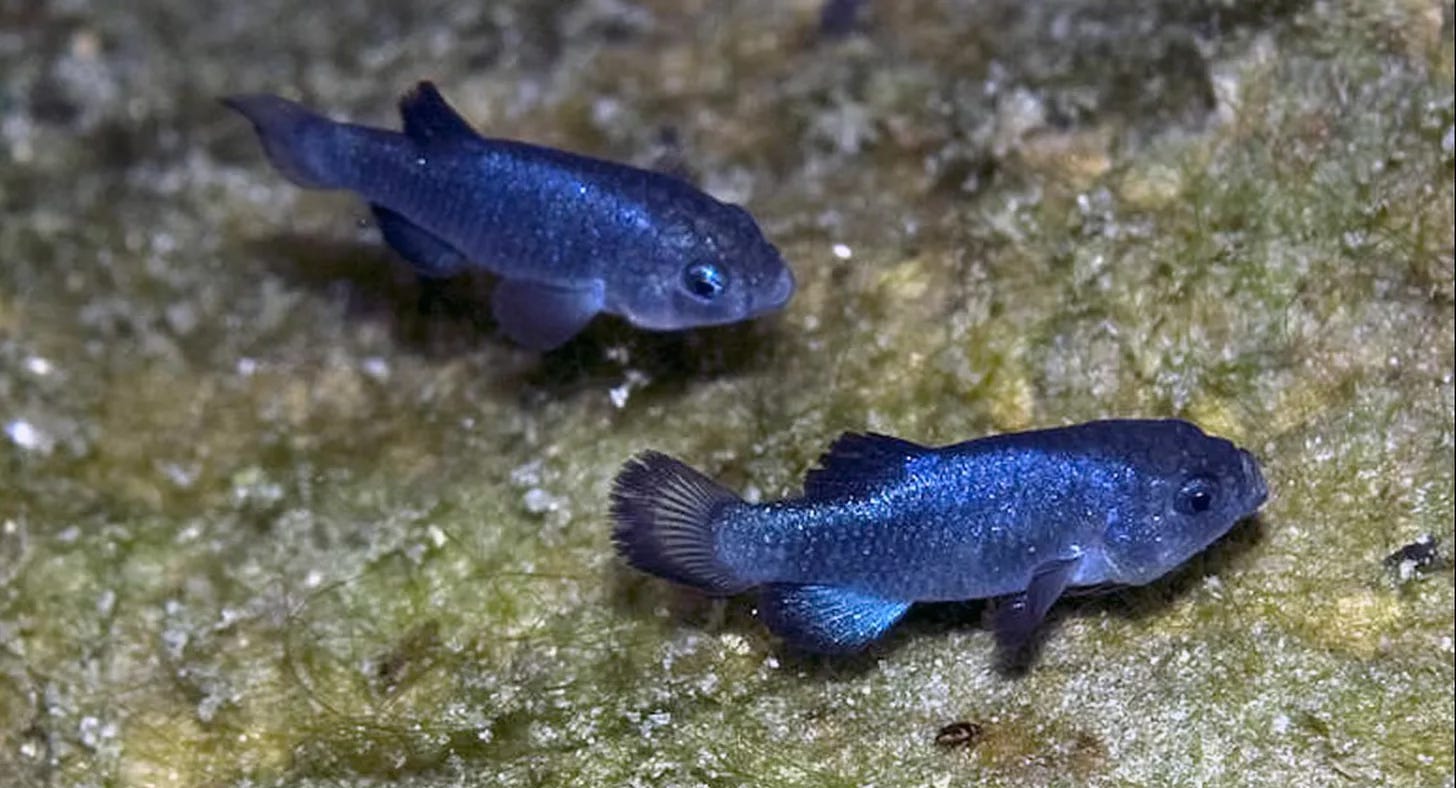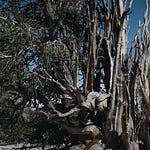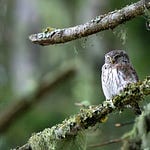By Dan Fletcher
Hello from Oakland. After a raft trip down the west’s last untamed river, a whirlwind tour through Mongolia’s steppe and several weeks traversing some of the the west’s national parks, I’m finally about to start home for a little bit to start editing this first series of mini-documentaries.
We have terabytes of footage on stories from the oldest trees to the rarest fish on earth, and I’m excited to share them with you soon. But first, I wanted to share the story of how an environmental near-catastrophe inadvertently created the perfect home for one of nature’s coolest birds of prey.
And if you’re a paid supporter, be sure to scroll to the middle of the newsletter to choose where we send this month’s FUZZ Funds donation! If you haven’t joined yet, add to our pool of conservation funds and become a subscriber today — 100% of your paid support goes directly to conservation causes we choose together each month.
Now, onto the osprey.
When destruction creates sanctuary
Each morning at first light, a dozen pairs of ospreys launch from limestone towers rising like ancient monuments from Mono Lake's alkaline waters. They're embarking on one of nature's more improbable commutes: a journey that can stretch up to 20 miles round trip to catch fish for chicks waiting at a lake that contains no fish at all.
These towers, called tufas, stand as proof of one of California's great environmental scandals. When Los Angeles began diverting Mono Lake's tributary streams in 1941, the lake dropped 45 vertical feet over four decades, losing half its volume. The receding waters exposed these calcium carbonate spires that had grown underwater for centuries — and inadvertently created perfect nesting sites for birds that shouldn't logically exist here.
It's a story that captures conservation's strangest ironies: how environmental destruction sometimes creates new habitats, and how nature finds ways to thrive in the most unlikely places.
The first osprey pair arrived in 1985, drawn by the newly exposed towers. For five straight years they failed to raise young, but their persistence paid off in 1989 when two chicks finally fledged. That pioneering success sparked a colonization that has grown into California's most unusual raptor population.
What makes these birds extraordinary isn't just where they nest, but how they've adapted to life at a fishless lake. Mono Lake's water is 2-3 times saltier than the ocean, with a pH of 9.8 — equivalent to household glass cleaner. Nothing swims here except brine shrimp and alkali flies. So the ospreys commute, flying 8-10 miles each way to fish at June Lake, Grant Lake Reservoir, and other freshwater bodies scattered across the Eastern Sierra.
Despite this daily marathon, environmental scientist Lisa Fields discovered something surprising: Mono Lake ospreys achieve breeding success rates of 1.42 young per nest — comparable to or better than populations with nearby food sources. The tufa towers offer unparalleled advantages. Surrounded by water too saline for mammalian predators, these natural fortresses eliminate threats from raccoons, coyotes, and snakes. The stable limestone platforms don't sway in storms like trees, and California State Parks enforces a 200-yard buffer zone around active nests.
Recent satellite tracking has revealed the continental reach of these commuter birds. Banded Mono Lake ospreys have been spotted as far away as Alabama and Texas during migration, connecting this desert lake to a hemispheric network of habitats.
But the ospreys are just the most visible beneficiaries of this accidental sanctuary. While they capture attention with their improbable daily flights, Mono Lake's true ecological significance lies in supporting nearly 2 million birds annually, drawn from the more than 325 species recorded at this vital oasis. As a critical stopover on the Pacific Flyway — the major migration route from Alaska to Patagonia — the lake has earned designation as a Western Hemisphere Shorebird Reserve Network site of hemispheric importance.
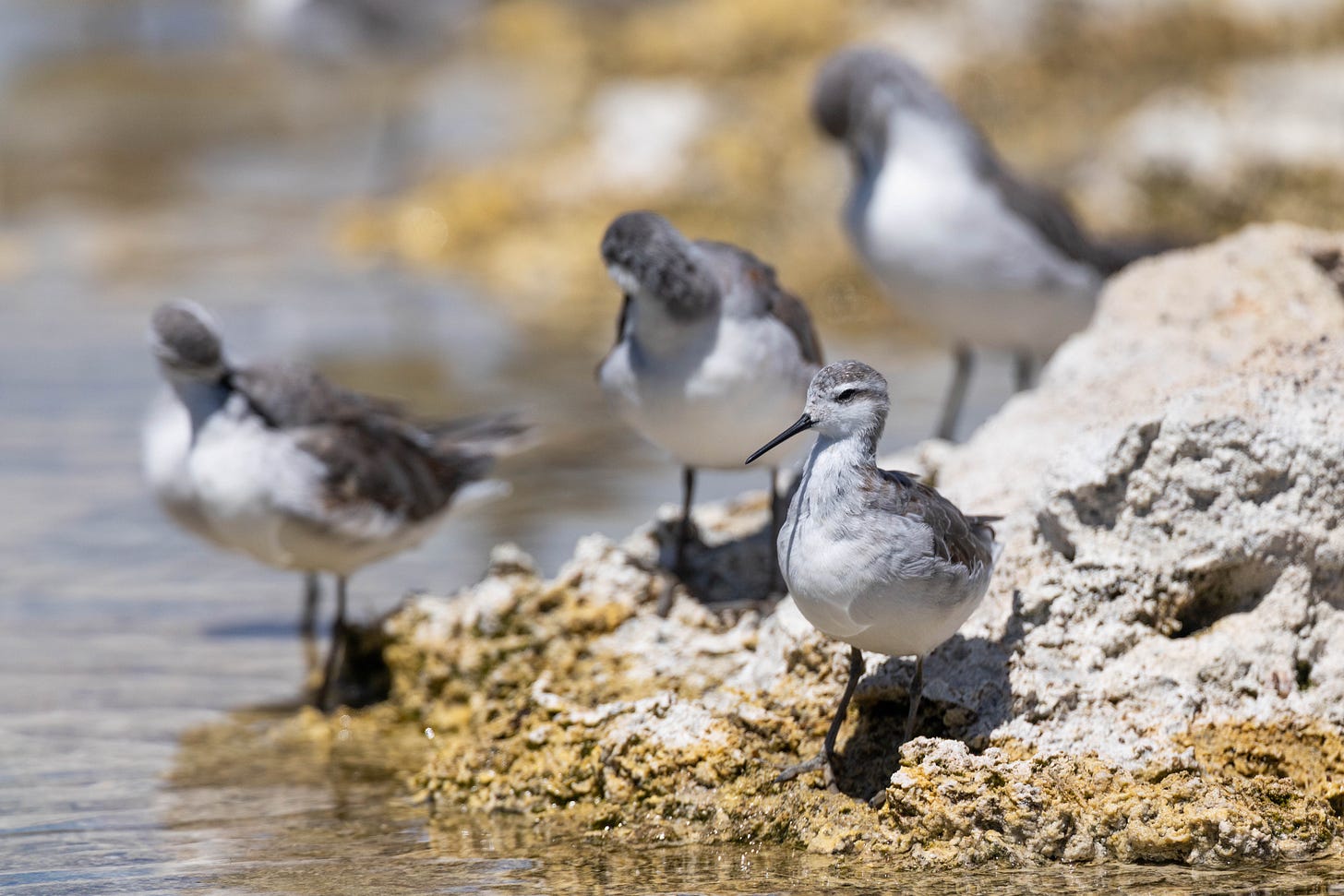
The most spectacular visitors are Eared Grebes, with 1-2 million birds — representing 30% of North America's population — staging here each fall. These diving birds gorge on brine shrimp until they triple their body weight, becoming temporarily too fat to fly. During their 3-4 month flightless molting period, they transform the lake into a massive avian gathering.
California Gulls represent another success story, with up to 65,000 adults nesting here annually in the second-largest breeding colony globally. Wilson's Phalaropes arrive by the tens of thousands in July, doubling their weight before undertaking a non-stop 3,000-mile flight to South American saline lakes.
The foundation of this spectacular abundance is deceptively simple: trillions of brine shrimp and alkali flies that thrive in the lake's extreme chemistry. Each Eared Grebe consumes 28,000-30,000 brine shrimp daily. The flies exhibit behavior that has fascinated scientists for decades — walking underwater in air bubbles to graze and lay eggs, an adaptation that also provided sustenance to the indigenous Kutzadika'a people for millennia.
This productivity stems from 760,000 years of mineral accumulation in a terminal basin with no outlet. Evaporation has concentrated salts to create a unique chemistry found nowhere else on Earth, supporting one of the planet's most productive yet simple food webs.
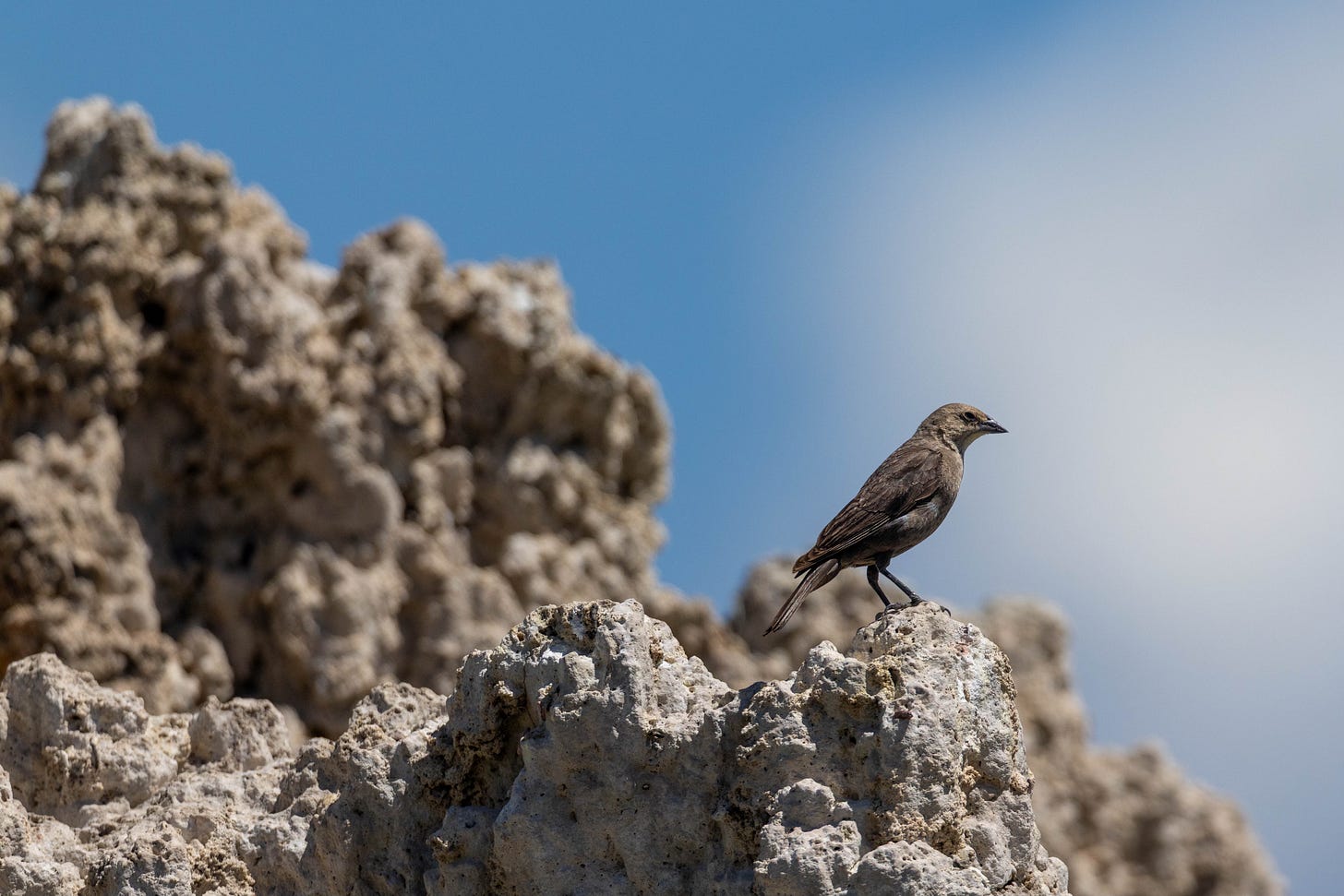
But recent years have brought troubling developments. The 2024 California Gull breeding season ended in catastrophe, with only 324 chicks surviving from over 20,000 adults — down from 11,000 the previous year. Scientists attribute this collapse to water stratification following exceptionally heavy winter runoff that disrupted brine shrimp production.
The lake's level remains significantly below the state-mandated target needed to ensure ecosystem health, protect nesting islands from predators, and prevent toxic dust storms from exposed lakebeds. Climate change projections show 2.5-4.1°C temperature increases and 15% decreases in streamflow by century's end.
The exposed tufa towers epitomize conservation's unexpected turns. These formations, revealed by environmentally destructive water diversions, now provide critical nesting habitat not just for ospreys but for violet-green swallows, rock wrens, mountain bluebirds, and even great horned owls. What began as ecological damage transformed into architectural marvels supporting biodiversity.
Despite conservation victories — Los Angeles now voluntarily limits water diversions and has become much more water-efficient — Mono Lake's story remains unfinished. The lake faces new challenges as climate change intensifies and the 2024 gull breeding collapse reminds us how quickly ecological victories can unravel.
The ospreys thriving atop towers exposed by ecological destruction embody both nature's resilience and conservation's complexity. In a world where water becomes increasingly precious, Mono Lake stands as a test case for whether human society can balance its needs with ecological imperatives.
The exposed tufa towers — simultaneously monuments to past damage and pillars supporting new life — perfectly capture this conservation paradox. Sometimes the most improbable accidents become sanctuaries for life we never expected to find there.
Choose this month’s FUZZ funds recipient!
In traversing the high desert this month, I met a ton of dedicated volunteers and conservationists working on America’s public lands to preserve and protect habitats and species at risk. Support for their work is more critical than ever, as cuts to the U.S. Forest Service and the National Park Service set in.
Across the Great Basin, the Great Basin Conservation Corps works to preserve one of America’s most unique climates, preserving habitat and training conservationists for work that includes protecting the rare groves of the Great Basin Bristlecone Pine, the oldest non-clonal living thing on earth.
In Death Valley, the Death Valley Natural History Association works to protect some of the most critical breeding ground and habitats for a wide variety of species, including the rarest fish on earth, in one of the most unforgiving places to live on earth.
And finally, the Mono Lake Committee watches over the osprey and the entire Mono Lake Basin, as increasing droughts and roll-backs to water efficiency standards threaten to further impact this critical nesting ground which still hasn’t managed to recover to its state-mandated level after decades of abuse.
Trees, fish, birds. All worthy causes, but you get to choose. We have $291 to donate this month — where should we send it? I’ll leave the poll open until next week’s newsletter.
Quick links! 🔗
We’ve talked before about the tough decisions necessary to curb rhino poaching — here’s one more clever attempt at solving the problem. South African researchers have launched a groundbreaking anti-poaching strategy: injecting rhino horns with radioactive isotopes that can be detected by airport security scanners worldwide. The University of the Witwatersrand's "Rhisotope Project" began mass injections this week after successful trials showed the low-level radiation is completely safe for animals but triggers alarms in customs detectors — even when horns are hidden inside 40-foot shipping containers. With South Africa losing about 500 rhinos annually to poaching and global populations down from 500,000 to just 27,000 since 1900, researchers hope this invisible tracking system will finally give law enforcement the upper hand against trafficking networks.
And remember how I talked about how earthquakes as far away as Japan can rattle the Devils Hole habitat in Death Valley for the critically endangered pupfish? The 8.8 magnitude earthquake in Russia's Kamchatka Peninsula sent 10-inch waves rippling through Devils Hole. The Devils Hole pupfish, with only 38 individuals counted in their latest survey, depends on a shallow shelf within the 500-foot-deep cavern for feeding and breeding. While the seismic waves "removed some materials" from this critical habitat and disrupted algae growth, National Park Service scientists are cautiously optimistic — the timing coincides with ideal sun conditions for algae regrowth, and pupfish are known to increase spawning rates after disturbances.




